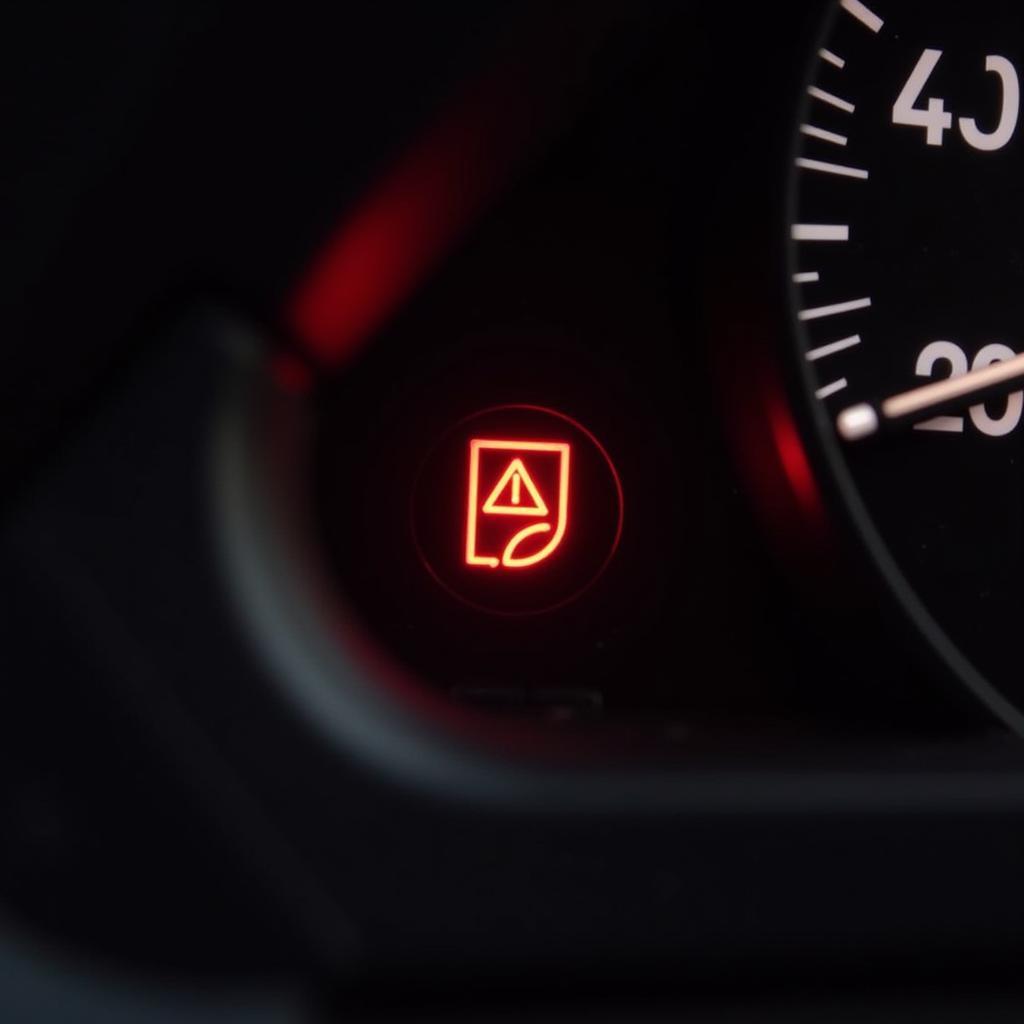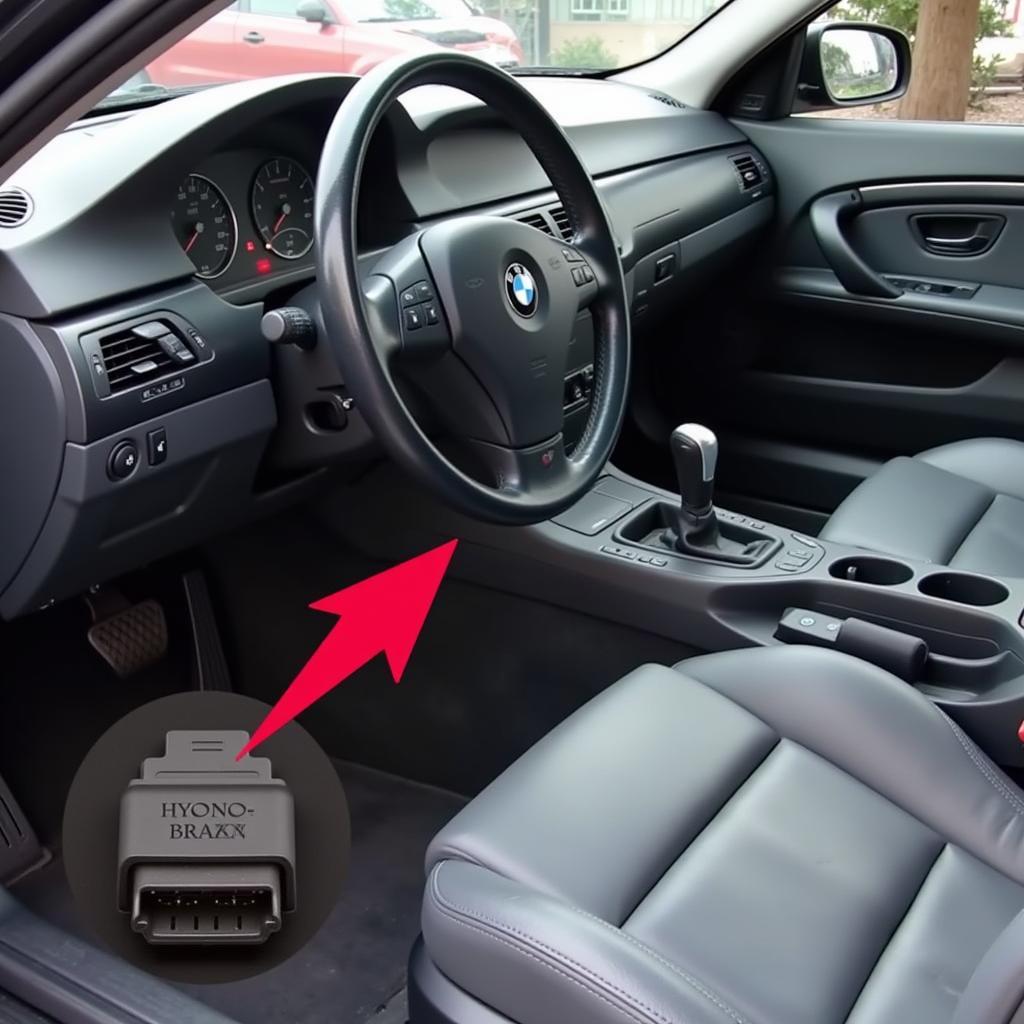The brake warning light on your BMW 320d E46 is a crucial safety feature. When illuminated, it signals a potential issue with your braking system that requires immediate attention. While sometimes a simple reset is all that’s needed, it’s vital to first understand why the light is on.
 BMW 320d E46 dashboard with illuminated brake warning light
BMW 320d E46 dashboard with illuminated brake warning light
Understanding Your BMW’s Brake Warning Light
The brake warning light can illuminate for several reasons, ranging from minor issues to more serious problems:
- Worn Brake Pads: This is the most common reason. Brake pads have wear indicators that trigger the light when they become too thin.
- Low Brake Fluid Level: Brake fluid is essential for transmitting force when you press the brake pedal. A leak or low fluid level can compromise braking performance.
- Faulty Brake Light Switch: The brake light switch activates your brake lights when you press the pedal. A malfunctioning switch can also trigger the warning light.
- ABS Sensor Issues: The Anti-lock Braking System (ABS) uses sensors to monitor wheel speed and prevent wheel lockup during braking. A problem with these sensors can illuminate the warning light.
- Other Issues: Less common causes include a faulty parking brake sensor, issues with the electronic parking brake module, or problems within the vehicle’s electronic control unit (ECU).
Before You Reset: Checking for Problems
Important: Before attempting to reset the brake warning light, it’s critical to ensure there isn’t an underlying issue with your braking system. Ignoring a legitimate warning could lead to unsafe driving conditions. Here’s a preliminary check you can perform:
- Visual Inspection: Park your car on a level surface and inspect your brake pads through the spaces between the wheel spokes. If the brake pad material is less than ¼ inch thick, they are likely due for a replacement.
- Brake Fluid Check: Locate the brake fluid reservoir under the hood (refer to your owner’s manual for its exact location). The reservoir will have a “Min” and “Max” marking. Ensure the fluid level is within this range.
- Test Your Brakes: In a safe location, like an empty parking lot, gently apply your brakes at low speed. Note any unusual noises, vibrations, or if the brake pedal feels spongy or goes closer to the floor than usual.
If you notice any of the above or suspect a problem, it’s strongly advised to take your BMW 320d E46 to a qualified mechanic or dealership for a thorough inspection.
Resetting the Brake Warning Light on Your BMW 320d E46
If you’ve checked for potential issues and everything seems in order, the warning light might be on due to a temporary glitch. You can attempt a reset using these methods:
Method 1: The Simple Reset
- Turn off the ignition.
- Press and hold the brake pedal for 30 seconds.
- While holding the brake pedal, turn the ignition to the “on” position (do not start the engine).
- Continue holding the brake pedal for another 30 seconds.
- Release the brake pedal and turn off the ignition.
Method 2: Using a Diagnostic Tool
- Connect a compatible OBD-II diagnostic scanner to your BMW’s diagnostic port (located under the dashboard on the driver’s side).
- Turn on the ignition (do not start the engine).
- Use the scanner to read and clear any fault codes related to the braking system.
 Location of the OBD-II port on a BMW 320d E46
Location of the OBD-II port on a BMW 320d E46
After trying either method, start your car and check if the brake warning light has reset. If it remains on, it’s crucial to seek professional assistance.
Expert Insights
“While resetting the brake warning light on your BMW 320d E46 might seem straightforward, it’s never a substitute for a proper diagnosis,” says Mark Carter, a senior automotive technician with over 20 years of experience. “Many car owners make the mistake of ignoring persistent warning lights, which can lead to more significant and costly repairs down the line.”
When to Consult a Professional
If the brake warning light persists after a reset or you encounter any of the following, seek professional help immediately:
- The brake warning light flashes continuously.
- You hear grinding or screeching noises when braking.
- Your brake pedal feels unusually soft or spongy.
- Your car pulls to one side when braking.
- You notice a significant decrease in braking performance.
Conclusion
The brake warning light on your BMW 320d E46 is a crucial safety indicator. Understanding its various triggers and knowing how to perform a basic reset can be helpful. However, it’s vital to prioritize your safety and seek professional assistance if you suspect any underlying problems with your braking system.

